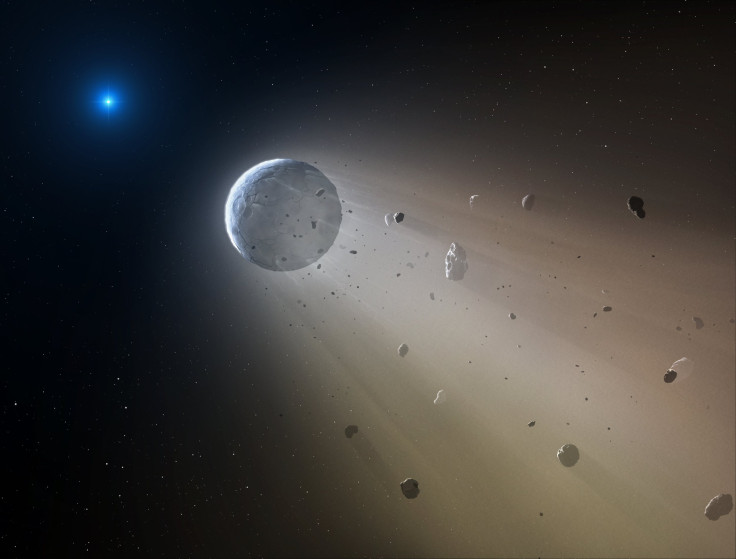NASA Spots 'Death Star' Committing Cosmic Manslaughter 570 Light-Years Away

In the constellation Virgo, some 570 light-years from Earth, a star at the end of its life is grabbing one last late night snack. NASA's K2 mission observed for the first time a white dwarf star consuming an orbiting planetary object.
Researchers from the Harvard-Smithsonian Center for Astrophysics coined the planet destroyed a "death star," but hidden behind the cool moniker is some impressive science. The observations made the re-purposed Kepler space telescope as part of the K2 mission provided the first evidence of a white dwarf star consuming a planetary object. The data also confirms the hypothesis that heavy metal pollution previously observed in white dwarf stars was due to the cannibalization of planets.
"We are for the first time witnessing a miniature “planet” ripped apart by intense gravity, being vaporized by starlight and raining rocky material onto its star," Andrew Vanderburg of the Harvard-Smithsonian Center for Astrophysics (CfA), said in a statement.
The K2 mission scans for dimming patterns around stars. A dip in brightness could indicate a planet orbiting in front of the star or a possible multi-object system. Researchers observed a pretty sizeable dimming effect -- around 40 percent -- as well as a debris trail afterward.
This debris trail was the "smoking gun" that the white dwarf star was consuming the planetary object. White dwarf stars are incredibly dense objects, but previous observations found evidence of heavy objects, such as iron and silicon, that should have sank to the star's interior. This heavy metal "pollution" was a mystery, but the latest observations indicate the source of these objects is from an orbiting object that may have been ejected by the star.
The object that's being vaporized by the white dwarf orbits the star once every 4.5 hours at a distance of 520,000 miles. The planetary object is estimated to be the size of Texas with a mass similar to the dwarf planet Ceres. K2's data also marked the first time a planetary object was seen orbiting a white dwarf.
White dwarf stars are sun-like stars at the end of their life. As the star gets older, the object begins to shed its outer layers, leaving behind a dense core. The sun will turn into a white dwarf in a few billion years.
"We're watching a solar system get destroyed," Vanderburg said. The research was published in the journal Nature.
© Copyright IBTimes 2024. All rights reserved.






















